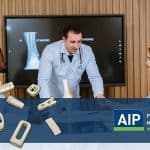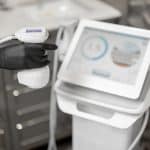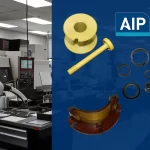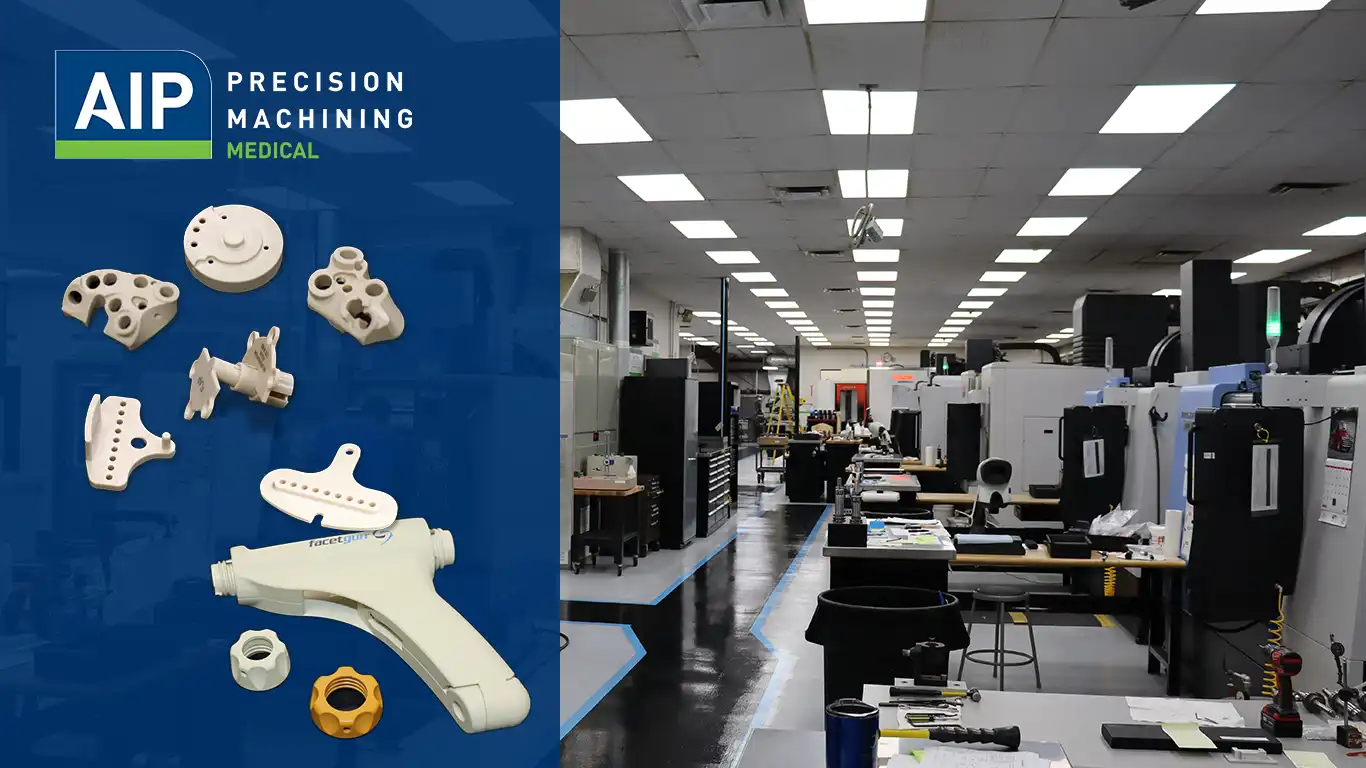
In the complex and highly regulated field of medical device manufacturing, ensuring compliance with quality standards is paramount. Medical parts manufacturing stands at the heart of this intricate ecosystem, serving as the backbone for producing devices that are critical for patient care around the world.
Regulatory demands, such as adhering to ISO 13485 standards, guide manufacturers through a labyrinth of prerequisites aimed at maintaining the highest level of quality and safety for medical devices. This emphasis on strict adherence to regulatory guidelines underscores the significant responsibility borne by manufacturers to deliver medical equipment parts that are not only effective but also reliably safe for end-users.
This article will navigate through the essential aspects of manufacturing medical parts, focusing on understanding the regulatory frameworks including FDA compliance and ISO 13485 certification. It will detail the essential requirements for FDA compliance, highlight the significance of complying with ISO 13485 standards, and discuss the implementation of rigorous quality control processes. Furthermore, methods to ensure that medical device manufacturing meets and exceeds the established standards of quality and compliance will be explored.
Understanding Regulatory Frameworks: FDA and ISO 13485
Overview of FDA Regulations
The FDA’s Quality Management System Regulation (QMSR) Final Rule, effective from February 2026, aligns with ISO 13485:2016, focusing on medical devices’ quality management systems. This harmonization facilitates consistency in regulatory frameworks used across various authorities, enhancing the global trust in FDA compliance.
The FDA categorizes medical devices into three classes based on risk, with regulatory controls intensifying from Class I to Class III. Each class demands specific compliance protocols, from general controls for Class I to Premarket Approval (PMA) for Class III devices. Additionally, the FDA’s Center for Devices and Radiological Health (CDRH) oversees the regulation of medical devices, ensuring safety and effectiveness from manufacturing to market.
Overview of ISO 13485 Standards
ISO 13485 is pivotal for manufacturers in the medical device sector, serving as a comprehensive quality management system that underscores the importance of consistent design, development, and production. ISO 13485 certification is essential not only for market trust but also for regulatory compliance, including the necessary CE marking for trading within the European Economic Area. This standard includes specific requirements that address risk management and product lifecycle, which are crucial for maintaining the efficacy and safety of medical devices. The 2016 revision of ISO 13485 introduced a risk-based approach to quality management, emphasizing the need for manufacturers to integrate this perspective across all operations to meet regulatory expectations effectively.
Essential Requirements for FDA Compliance
Establishment Registration
Manufacturers, both domestic and foreign, along with initial distributors, known as importers, are mandated to register their establishments with the FDA. This registration must be submitted electronically, and all information must be verified annually between October 1st and December 31st each year. For foreign manufacturers, a U.S. Agent must also be designated. This registration process is crucial as it aids the FDA in maintaining a record of all entities involved in the production and distribution of medical devices within the U.S.
Medical Device Listing
Following establishment registration, manufacturers must list their medical devices with the FDA. This includes a wide range of entities from manufacturers to reprocessors of single-use devices. The listing process is essential for the FDA to monitor which devices are being produced and to ensure compliance with regulatory standards. If a device requires a Premarket Notification 510(k), it cannot be commercially distributed until FDA clearance is obtained.
Premarket Notification 510(k)
The 510(k) is a premarket submission that demonstrates a device’s safety and effectiveness by proving its substantial equivalence to a legally marketed device. Manufacturers need to submit a 510(k) if they intend to introduce a new device into commercial distribution in the U.S. This submission is critical for obtaining marketing authorization for the device.
Quality System Regulation (QS Regulation)
Under the Quality System (QS) Regulation, which aligns with international standards like ISO 13485, manufacturers must establish and follow quality systems. This regulation covers various aspects of production, from design to servicing, ensuring that devices meet FDA standards for safety and effectiveness. Compliance with QS regulations is verified through FDA inspections, making it a fundamental aspect of FDA compliance.
Labeling and Medical Device Reporting
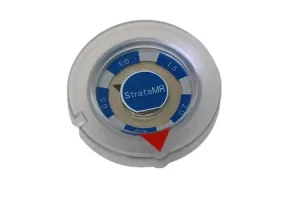 Labeling regulations are specified under several parts of Title 21 of the Code of Federal Regulations. These regulations ensure that all medical devices are accompanied by clear, accurate labeling that informs users of the device’s intended use and any risks associated with its use. Additionally, Medical Device Reporting (MDR) is a critical postmarket surveillance tool used by the FDA to monitor device performance and track adverse events. Manufacturers, importers, and device user facilities must report any serious injuries, deaths, or safety issues encountered with the devices to the FDA.
Labeling regulations are specified under several parts of Title 21 of the Code of Federal Regulations. These regulations ensure that all medical devices are accompanied by clear, accurate labeling that informs users of the device’s intended use and any risks associated with its use. Additionally, Medical Device Reporting (MDR) is a critical postmarket surveillance tool used by the FDA to monitor device performance and track adverse events. Manufacturers, importers, and device user facilities must report any serious injuries, deaths, or safety issues encountered with the devices to the FDA.
Complying with ISO 13485 Standards
ISO 13485 is pivotal for manufacturers in the medical device sector, outlining rigorous requirements for a Quality Management System (QMS) that ensures consistent design, development, and production. The 2016 revision of ISO 13485 places a strong emphasis on risk management, significantly impacting how device manufacturers approach quality assurance.
Documentation and Record-Keeping
Effective control and management of documentation are crucial under ISO 13485. The standard requires a structured documentation system to ensure consistency and traceability throughout the product lifecycle. Key components include the Quality Manual, which outlines the structure of the QMS, and various levels of documentation, such as SOPs, work instructions, and records that demonstrate compliance. This hierarchical documentation ensures that processes are carried out uniformly and are continually monitored for compliance and efficacy.
Supplier Management
ISO 13485 emphasizes the necessity of meticulous supplier management to maintain product quality and compliance. This standard requires manufacturers to document processes for evaluating and selecting suppliers that can meet the specified requirements. This includes conducting risk assessments to determine the criticality of each supplier’s impact on the overall quality of the medical devices. Regular audits and re-evaluations are mandated to ensure ongoing compliance and to address any potential risks associated with suppliers.
Risk Management
The revision of ISO 13485 has introduced a more pronounced focus on risk management, requiring a risk-based approach to be embedded throughout the QMS. This involves identifying potential risks in every process, from design and development to production and post-market activities. Manufacturers must implement appropriate risk control measures and maintain records of risk assessments, mitigation actions, and results. The integration of risk management into the QMS enhances the ability to produce safe and effective medical devices compliant with regulatory requirements.
By adhering to these standards, manufacturers not only comply with international regulatory expectations but also ensure the highest quality of medical devices, ultimately safeguarding end-user safety.
Implementing Quality Control Processes
Defining Quality Control Objectives
The quality control process in medical parts manufacturing hinges on establishing robust acceptance criteria. These criteria are documented in a formal acceptance document that specifies the exact features and specifications a device must meet to be deemed fit for sale. It is crucial that the language used in defining these features is clear and unambiguous to prevent any misinterpretation that could lead to a product being incorrectly flagged as non-conforming. This clarity helps ensure that all quality control team members have a uniform understanding of the standards against which they are testing.
Inspection and Testing Procedures
 Once the quality control objectives are set, the focus shifts to the inspection and testing of medical devices. This stage is critical as it determines whether a product batch is ready for shipment. Quality control teams are responsible for conducting detailed inspections and various tests to verify that each product meets the established acceptance criteria. According to FDA’s quality system regulation, medical device manufacturers are allowed to design their own quality control tests. However, it is mandatory to maintain comprehensive documentation that substantiates the effectiveness of these tests. This documentation is crucial for meeting FDA compliance and for internal audits to assess the consistency of the quality control process.
Once the quality control objectives are set, the focus shifts to the inspection and testing of medical devices. This stage is critical as it determines whether a product batch is ready for shipment. Quality control teams are responsible for conducting detailed inspections and various tests to verify that each product meets the established acceptance criteria. According to FDA’s quality system regulation, medical device manufacturers are allowed to design their own quality control tests. However, it is mandatory to maintain comprehensive documentation that substantiates the effectiveness of these tests. This documentation is crucial for meeting FDA compliance and for internal audits to assess the consistency of the quality control process.
Corrective and Preventive Actions (CAPA)
CAPA plays a pivotal role in the quality control process. It is triggered when quality control staff identify a nonconforming product during inspections. The team must then perform a root cause analysis to uncover any systemic flaws that led to the nonconformance. This process is essential for not only correcting the immediate issue but also for implementing preventive measures to avoid future occurrences. While CAPA is a powerful tool for maintaining high quality and compliance, it is important to use it judiciously to avoid unnecessary investigations that could divert resources from more critical issues. Properly managed, CAPA helps in continuously improving the quality control processes, thereby enhancing product safety and reliability.
Methods to Ensure High Standards
Internal Audits
Internal audits are a fundamental requirement for maintaining compliance with both FDA and ISO 13485 standards. They serve as a critical self-assessment tool to ensure that all processes related to medical device manufacturing meet the highest quality standards. By adopting a rigorous internal audit system, manufacturers can identify areas of non-compliance and implement corrective actions promptly. Utilizing modern Quality Management Systems (QMS) can streamline the audit process by automating workflows and ensuring comprehensive coverage of all necessary areas.
Continuous Improvement
The philosophy of continuous improvement is integral to achieving and maintaining high standards in medical parts manufacturing. This approach involves a perpetual cycle of evaluating processes, implementing improvements, and reassessing outcomes. Continuous improvement ensures that manufacturing processes not only meet current compliance requirements but also adapt to evolving industry standards and technologies.
Training and Competence
Effective training programs are crucial for ensuring that all employees are competent and capable of performing their roles according to the stringent requirements of medical device manufacturing. Comprehensive training equips personnel with the necessary skills to identify potential safety risks and ensures adherence to quality standards. A systematic training approach minimizes the risk of non-compliance and enhances the overall quality of the medical devices produced.
Conclusion
The landscape of medical device manufacturing is one of perpetual evolution, where continuous improvement and adherence to regulatory expectations remain paramount. As we look towards the future, the focus on advanced quality management systems and the effective integration of risk management throughout the product lifecycle will undoubtedly remain critical.
If you’re looking for further insights and solutions for your medical device manufacturing needs, contact AIP Precision Machining and let our medical parts manufacturing experts assist your team.
FAQs
1 – Which international standard governs risk management in medical device manufacturing?
ISO 14971 is the recognized global standard for risk management in the development of medical devices. Companies manufacturing medical devices must adhere to ISO 14971’s risk management processes to market their products internationally.
2 – What does compliance entail in the medical device sector?
Compliance in the medical device industry involves adhering to specific regulatory requirements. Manufacturers must implement a quality management system, establish proper design controls, engage in post-market surveillance, and gather clinical evidence to demonstrate compliance.
3 – What FDA regulations must be followed for medical device compliance?
The Quality System Regulation (QS Regulation) under 21 CFR Part 820 is essential for medical device compliance. This regulation covers various aspects, including design, purchasing, manufacturing, packaging, labeling, storage, installation, and servicing of medical devices.
4 – Why is quality control critical in manufacturing medical devices?
Quality control in medical device manufacturing is crucial primarily because it enhances patient safety. By helping to identify and prevent defects in medical devices, quality control programs significantly improve patient safety outcomes.

